All the ways to try to get someone else to pay for flight school
If I had a dollar for every time I’ve seen a prospective student’s eyes widen when they hear about how much flight training costs…well, I’d probably have about as much money as you’d need for flight training. The question I can see written on nearly every face is, “ how am I supposed to come up with that?”
The Flight School at Colorado Springs offers a variety of tools to help reduce the expensive cost of flight training, including a unique training plan and pre-pay training packages, but we’ve also put together a guide to understanding many of the common routes people fly when obtaining the financing needed for flight training.
Disclaimer: We teach people how to manage fuel loads without concern for its cost (because if you need the fuel, you’d better have it in the tank). We don’t teach people how to manage money. Nothing in this article should be construed as financial advice, as The Flight School at Colorado Springs and its staff are not financial advisors. Consult your financial and legal professionals before borrowing money, buying airplanes or doing anything else, really.
Beg, Borrow & Fly It Like You Stole It: How To Learn More For Less Money
Despite all of the cost-saving measures we employ here at The Flight School at Colorado Springs, flight training is really expensive. In some sort of cruel capitalist joke, flight training can actually cost even less for those privileged few who have the money on hand to fly with (I’ll explain why later). For the rest of us, various forms of loans, scholarships and other financial schemes will have to do.
Scholarships
The best money is free money. A few hours of essay writing and application filling could earn you some or all of your flight training money. We highly recommend applying for scholarships whenever possible.
Start with ours: The Flight School Scholarship offers advanced students a huge discount on training with The Flight School at Colorado Springs.
We’ve gathered an array of scholarship opportunities below for you to explore and apply for, but the FAA also maintains an extensive list of scholarships and grants.
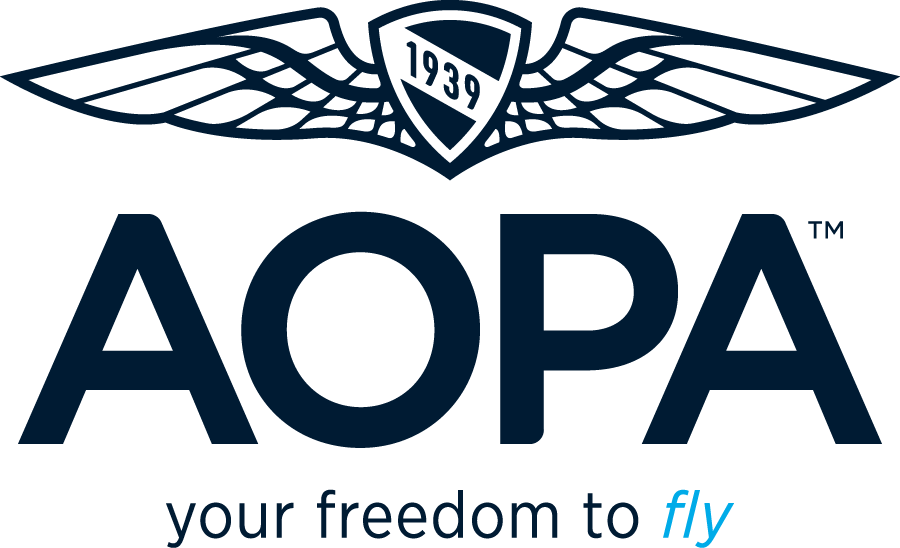
Aircraft Owners and Pilots Association
Not only does the AOPA offer great scholarships, membership offers a number of valuable services, including insurance partnerships and more.
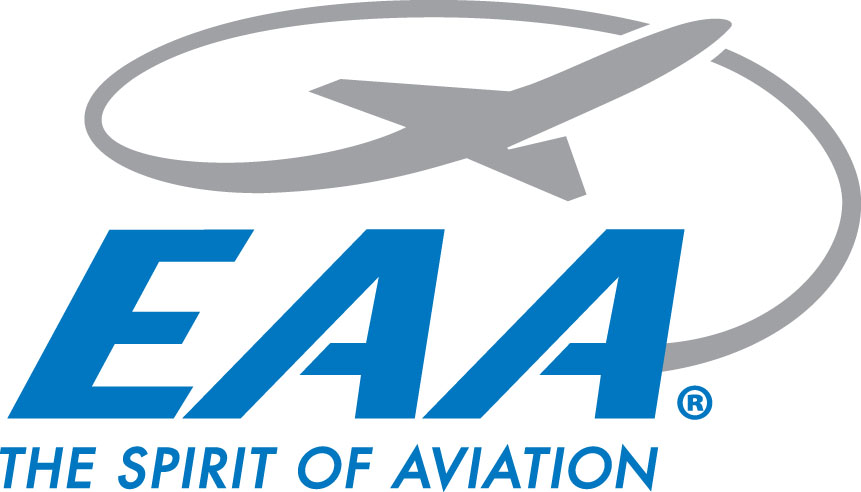
Experimental Aircraft Association (EAA)
A major scholarship provider, the EAA offers fantastic resources for those just starting out via its website and a great community via its many local chapters.


Aircraft Electronics Association (AEA)
With a list of available scholarships, the AEA provides a number of medium-sized opportunities for AEA Members and their employees.
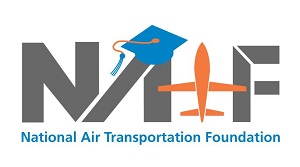

National Air Transportation Foundation (NATF)
The National Air Transportation Foundation (NATF) is the research and educational branch of the National Air Transportation Association (NATA) and offers several scholarships.


National Gay Pilots Association (NGPA)
Available to its members and aimed at promoting LGBTQ diversity in aviation, the NGPA offers at last two substantial annual scholarship opportunities.


The 99s
Promoting Women in Aviation, the 99s was founded by Amelia Earhart and her contemporaries. The organization offers several important scholarship opportunities.
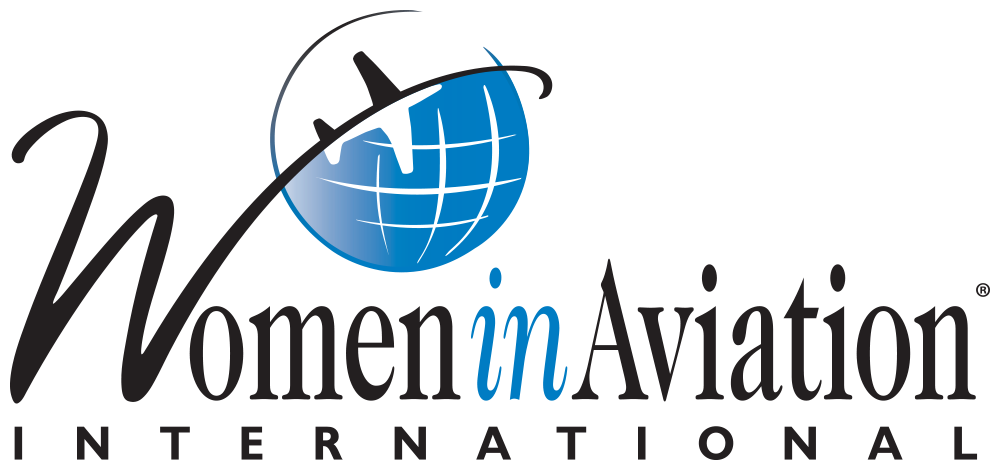

Women in Aviation International (WAI)
Also devoted to promoting women in aviation is WAI, an organization offering a program for developing female leadership in aviation.
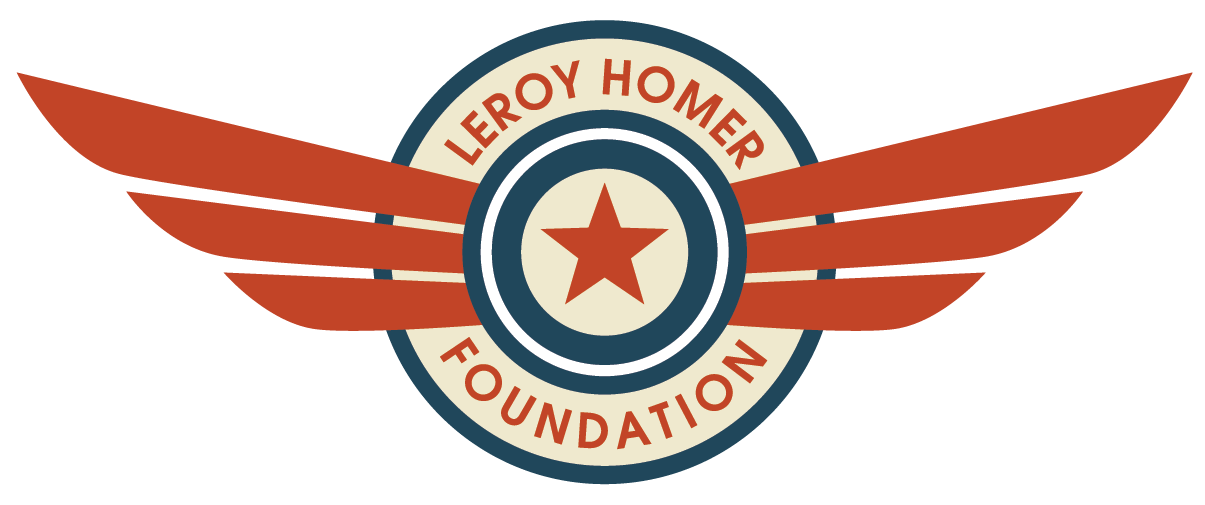

Leroy W. Homer Jr. Foundation
In support of older teens and young adults pursuing Private Pilot certificates, the Leroy Homer Foundation offers an annual scholarship.
Loans
Most people who don’t save up for or earn enough to pay for flight training before or while flying borrow to make training happen. And to many, it seems fairly low risk: a career as an airline pilot will pay plentifully across several decades and a relatively-small loan to make that career happen is obviously worth it. And, for many, it is. Whether a student or personal loan specifically tailored to flight training or some other type of general personal loan, borrowing against the promise of future income from your new career appears fairly common.
There are risks, with loans, however. What if you’re injured or fall ill and your medical is revoked? What if airline hiring suddenly drops off and you can’t find work that pays enough to pay the loan back? This is why it’s important to consult financial professionals that aren’t trying to sell you a loan before signing.
Of the several borrowing options available, some may work well to help you accomplish your flight training goals with tailwinds and no turbulence and others may result in some sort of “FFIT” (Financial Flight Into Terrain).
Flight Training Loans
Several providers offer loans specifically designed and tailored for those using the borrowed money to learn to fly. We don’t necessarily recommend any specific loan providers, but we’ve listed a few whose loans would allow you to use the funding to train with The Flight School at Colorado Springs. Ensure the provider you choose will let you use the funds they’ll provide you at the school you want to train with.



AOPA Finance
In addition to scholarships, the AOPA also offers financing options to student pilots.

Flight Training Finance
Flight Training Finance offers a variety of loan options based on how much your specific program may cost and how much you want to borrow.
Other Providers
For those training with other schools, providers like Meritize, Stratus Financial and Sallie Mae may also be available. These providers offer school-specific programs with additional financing options. Speak to your specific training provider about what options they may offer.
Personal Loans
In addition to the myriad options tailored specifically to flight training, some students may choose to pursue personal loans. Unfortunately, most personal loans do not permit use of funds for postsecondary education. Some offer exceptions to this rule, however, reportedly including Upstart and potentially Light Stream. (You should verify this before taking out a loan).
Even if a personal loan can’t be used for flight training, it could potentially be used for other expenses to free up capital for use in flight training. We don’t recommend doing this without consulting a financial professional and triple-checking the math to ensure you’ll be able to afford it.
Personal loans may be available from your local banks and credit unions or online financial services. Be sure to carefully read and understand all the loan terms and conditions and fine print before borrowing any money.


LightStream
LightStream offers many types of loans, including for use purchasing aircraft.


Upstart
Upstart offers a variety of flexible personal loan options, including, potentially, for use with flight training.
Home Equity Loans and Lines of Credit (HELOC)
Many of the same lenders offering Personal Loans also offer other types of loans. Other students, especially those beginning a career later in life, may take a second mortgage or use the value of their home to collateralize the money they borrow.
Often, putting up a valuable asset as collateral reduces the lender’s risk and results in a much lower interest rate. In other words: if you have something of value to essentially use to say, “if I don’t pay, you can take this away,” you’ll be able to pay less for the use of someone else’s money to pay for your training.
Offering your home as equity for a Home Equity Loan or Home Equity Line of Credit may be a more affordable way to borrow money for flight training.
Low or 0% Intro APR Credit Cards
We strongly advise against the use of credit cards to finance your flight training. Don’t do it. If you use a credit card to pay for your training, be certain you can pay it off in full before you incur interest. The typical credit card interest rate is horrendous and credit cards contribute to wealth disparities that harm our society. Had enough disclaimer yet?
Theoretically, if you didn’t follow our advice (which, to beat a dead horse SkyCatcher, is to never finance your training with a credit card), you could theoretically use some cards’ low or 0% introductory APR periods to avoid paying interest and finance large sums of money for up to 18 or 20 months with some credit cards. Again, but this time say it with me: “It’s. a. bad. idea.”
The penalties for not paying off the card at the end of the period could be severe, so don’t do it. The negative effect of carrying a high balance on your credit card could make using your credit to try to transfer a balance if you needed to—or obtain some other form of financing to bail yourself out of a tricky situation quite difficult. Again: don’t do it. The list of reasons to not do this goes on… but it’s theoretically something you could do with careful planning.
Other Financial Schemes To Think About (...But Not Necessarily Do)
So you’ve begged and borrowed. How do you ‘fly it like you stole it’? And also, what exactly do we mean by that? (*The FAA, NTSB & TSA have entered the chat.*)
No, we don’t mean you should steal aircraft to learn to fly. Sure, we’ve heard some pretty wild, unsafe stories about stolen aircraft and sketchy training offers, but we’re just alluding to creative ways you can make your training more affordable.
Some of these ideas are smarter (or more stupid) than others, but we’ll let you decide if any are right for you. As with everything we talk about in this article: do these at your own risk.
Find The Right School or Program
Nothing is more expensive than bad training. It is undoubtably worth paying more for better training, especially with something as inherently risky as leaving the ground in a tin can with a fan on the front of it. There just isn’t a way around the reality that the better training you have, the better prepared you’ll be.
But unfortunately, more expensive training doesn’t always mean better training. In fact, in many cases it’s the opposite. So how can you tell which schools, programs or instructors you can trust? How do you evaluate the quality of training without yet having had any training?
Available Metrics
Few independent or regulatory metrics are available to evaluate the quality of flight training. Schools self-report pass rates and make all manner of advertisements and promises. Many don’t deliver and many of the promises made in this industry set dangerous expectations and promote the infamous “get-there-itis” and other hazardous attitudes.
Some publications purporting to make independent recommendations charge flight schools to be included in “best of” lists and other marketing materials, so you can’t know if a magazine or other publication hasn’t just sold advertising.
Individual instructors who’ve managed to pass enough students with success can confirm receipt of an FAA-designated “Gold Seal.” This means the instructor has seen at least 8 of 10 students recommended for a check ride passed in the past 24 months. While volume of students and a good pass rate can certainly be an indicator of experience, it doesn’t necessarily mean the instruction will go above and beyond the requirements or that the instructor is right for you.
Think Critically, Ask Questions & Trust Your Gut
The best way to determine if an instructor is right for you is by sampling a variety of instruction techniques, instructors and schools. Discovery Flights exist to assist with this and offer a great way to determine if a school is right for you—but you should come prepared with questions.
As a Chief Pilot, I’ve always told instructors I hire that Discovery Flights are the aviation equivalent of “selling drugs to kids.” It’s so easy for someone who hasn’t had much experience with aviation to get carried away with the excitement and romance of aviation that an instructor doesn’t have to do much actual selling: the experience does all the selling.
But students trying to evaluate if a school is right for them should also use a Discovery Flight to think through some questions about the instructor(s) school and program: it’s dangerous to get caught up in the romance of flight. Here are a few examples of things to think about when touring a flight school:
- How much does flight training cost? How transparent is the school with its pricing? Do quotes from the school reflect average completion times or minimum requirements? Pricing alone doesn’t determine quality, but how honest the school is with its advertisements can say a lot.
- How busy is the school? Busier schools may seem more trustworthy, but schools that haven’t thought through how they manage the schedule may mean it’s difficult to keep your training consistent. Schools with application processes may be more selective, but barriers to entry may also mean your peers will be as dedicated to success as you are.
- How long does flight training take for students at this school? How often do students overfly the estimates and when it does happen, why does it happen? Training delays can often be extremely costly.
- Does the flight instructor seem like someone I want to spend 60 or 80 hours with? Why are they doing this job and do they like it? How is the flight instructor paid and are they paid enough that they won’t be tired from a second job, distracted at work or checked out during your training? The flight training industry often takes advantage of instructors and you don’t want a burnt-out instructor.
- Where is maintenance on the aircraft done? Can you meet the mechanics and see the shop? How organized and thorough does the shop seem? Has it been fined by OSHA? How much experience do these mechanics have? Are there children working on airplanes in the shop? (yes, I’ve actually seen that!)
- What is the school’s accident rate? Stuff happens, but if a school is damaging multiple aircraft every year, do you really want to risk being in one of them the next time it happens?
There are many, many factors to consider when choosing a flight school. You can’t possibly know all of them as a student pilot, so at a certain point you’ll just have to trust your gut, recommendations and any available data you have. Don’t be afraid to switch instructors or even schools as necessary, because the quality of your training is more important than all else and finding the right school for you will ultimately save you the most money overall.
Buy Your Training Aircraft
The cost of flying an aircraft you own may be less than the cost of renting an aircraft to fly—especially if you lease your aircraft back to the school that teaches you to fly and/or eventually use the aircraft to teach others to fly while you build hours.
The cost of flying an aircraft you own may also be significantly more than the cost of renting an aircraft to fly—especially if you lease your aircraft back to the school that teaches you to fly and/or eventually use the aircraft to teach others to fly while you build hours.
Owning your own aircraft requires a pile of money. And then another pilot of money sitting around ready for when something goes wrong. Ironically, of course, owning your own aircraft can save you a pile of money on your flight training. It’s one of those unfair realities whereby those with money get to pay less in life.
The Pros to Ownership
It’s risky, but if you own your own aircraft, learning to fly and building the requisite hours to become a certificated Airline Transport Pilot (ATP) can be substantially less expensive than renting. You’ll also learn a ton about aviation by owning the aircraft you fly. You don’t pay for the premium on aircraft rental and thus save a portion of every flight hour’s cost. You also don’t have to deal with common student complaints, which include classic hits such as, “the student before me broke the airplane, so my lesson is canceled” and “there’s no room on the schedule because the school has too many students and not enough planes” or, our personal favorite, “I had to take a different plane this lesson because the one I had last time is booked and now I have to learn a different plane all over again.”
A leaseback opportunity with a flight school can also help reduce your maintenance cost and help your aircraft make money while you aren’t flying it.
The Cons to Ownership
There are a handful of vulgar sayings about owning aircraft that we won’t repeat, but we will pass on one cliched saying we’ve often heard: “The second best day of your life is the day you buy your airplane and the best day of your life is the day you sell your airplane.”
Maintenance, insurance, fuel, oil and hangar costs have skyrocketed in recent years and the cost of aircraft ownership is quite high. Revenues from leaseback agreements are often seasonal and depend on how much maintenance your aircraft might require. Buying the wrong plane or a plane with a bad engine can also make your life a nightmare. Maintenance time can eat into flight time and you can be out of the sky for weeks at a time. Maintenance—and especially good maintenance—isn’t just costly, it’s hard to find.
The list of cons is as long as the list of pros, but none of those say aircraft ownership isn’t also rewarding, because it certainly can be with the right team behind you. But you should beware the risks before you take on buying an aircraft to help reduce the cost of or pay for flight training.
Credit Card Rewards
Time for more disclaimers: Depending on the credit card company, tricks like the ones we’re about to describe may be against the terms of your cardholder or rewards agreement. Be careful to read the fine print and make good choices. Okay, carry on.
Typically, credit card rewards are a moot point with flight training. If you pay for your training with a credit card, a service fee of roughly 3% is often charged on top of your balance. Even if you’re earning an excellent 2.5% cash back reward on your credit card spending, the 3% fee negates the rewards by half a cent per dollar. But, if you’re working toward elevated rewards in the form of a welcome bonus, you might see some benefit to earning credit card rewards.
To be clear: no reward really matters if you pay interest on the account balance. Pay off your credit cards in full before the due date every time.
I once taught a student who had a binder of credit cards. (Yes, a literal binder with dozens, if not hundreds of cards). She would pay for her training on whatever new credit cards she’d received that week or month and then, because flight training is expensive, she’d meet the minimum spend requirements on the card and earn the card’s welcome bonus reward.
Because this student had developed a list of how much each card’s reward currency was worth to her, she knew which cards would reward with a value higher than the 3% service fee she was charged for paying with a card. Her typical return on a welcome bonus reportedly ranged between 7% and 17% of the minimum spend requirement even after the 3% service fee, so if she spent $1,000 as part of a minimum spend requirement to earn the bonus, she’d earn between $70 and $170 in rewards. Though the rewards she earned were often in the form of travel points that she had plans to use at some point in the future, she claimed she saved an equivalent value of about 10% of all of her flight training costs.
Pursuing rewards in the way this student did may be against the rules of some credit card companies, but for those with the patience for the fine print and the skill to handle the organizational thinking required, there may be some advantage to using credit card rewards to help gain extra value from your flight training.
Rob A Bank/Yourself
To rob a bank you should go apply for and get a job at the bank you want to rob, do great work for the bank and become a valued employee and the bank will just put the money into your account and you can withdraw it. Rinse and repeat until you have all the money you need. Great plan, right? /s
We’re obviously kidding. Don’t rob a bank. But you could rob yourself—and by rob, we mean lend yourself the money. For those who have retirement or investment accounts, borrowing against your own money to pursue a second career may be an option. You can and should talk to your CPA before doing this to fully understand tax consequences and other risks, however.
Get A Job
“Something something bootstraps, something something.”
Again, we’re just kidding. You can certainly pay for flight training as you have the money, but in our experience it’s typically better to save up and then pursue your training once you’ve saved up enough money to at least pay for an entire rating at once.
You might hear your flight instructor compare flying to working out. If you don’t hit the gym fly an airplane regularly, you won’t get swole improve your landings. The informational and skill atrophy that occurs between inconsistent or infrequent lessons often means much of every lesson is spent reviewing things from the previous lesson. We recommend flying at a minimum three times per week, but our accelerated courses often promote flying nearly every day the weather permits.
To Quit or Not To Quit?
We’re also often asked if a student should quit their day job to learn to fly. While we love it for you if you can train without working and would recommend it if you’re in a position to do so, The Flight School at Colorado Springs doesn’t require it. While flight training full-time helps you focus, we recognize it’s not often in the cards for most people to be able to live on savings while paying for flight training.
Working to pay for flight training is generally a preferable option to loans (or in harmony with a loan) so long as it doesn’t exhaust you and cause you to fall asleep at the controls. If you can work part time, do that instead. But whatever you do, think it through before you do it.
Flight Clubs, Partial Ownership & Other Fun Timeshares
The first rule of flight club is…be careful. Flight clubs can offer great benefits: you pay dues and can fly for a reduced rental cost without too much additional responsibility. But flight clubs are also known for being the “wild west” of general aviation: anything might go.
Members of flight clubs have reported great success with flight clubs and members have also reported inconsistent maintenance, poor scheduling and overcrowding that makes being a part of the club way more expensive or more of a headache than anticipated. Always read the fine print and understand what you’re getting into before you sign up for any flight club.
Especially with smaller flight clubs or partial/fractional ownership deals, where you might have to buy into an aircraft or a fleet of aircraft, be sure to understand your obligations and exit options. Horror stories of fractional owners stuck paying for endless maintenance without anyone to buy them out abound. Be wary of suspicious hangarfellows, too, for the aviation world (like any industry or community) certainly can be a socially-perilous place.
Airline Tuition Reimbursement
Attending a school where airline tuition reimbursement is available may also be an option, but be careful to understand the specifics regarding exactly how much of your tuition will be reimbursed. Often, the inflated prices of flight training academies may not make the reimbursement package worthwhile—especially since in many cases, the reimbursement is not earned until you sign on at the airline.
Accelerated Training & Prepay Deals
The Flight School at Colorado Springs offers a number of cost-saving strategies, including prepay deals that offer reduced-cost training in exchange for nonrefundable prepayment and bulk-hour deals that help you save money on time-building and more. Our other strategies help you save on the hidden costs of flight training, like our virtual ground schools and more.
Working to pay for flight training is generally a preferable option to loans (or in harmony with a loan) so long as it doesn’t exhaust you and cause you to fall asleep at the controls. If you can work part time, do that instead. But whatever you do, think it through before you do it.
To Finance or Not To Finance?
Consult an accountant regarding your financial situation before you make any major financial decisions such as borrowing a cargo plane full of money to learn to fly. And if you do decide to borrow, be sure to have a plan to complete your training quickly and as affordably as possible.
We highly recommend any scholarship that’ll give you money you don’t pay back. We don’t always recommend financing options, as some are undoubtedly better than others and only a few will likely be right for you. We love talking about how The Flight School at Colorado Springs offers affordable, accelerated flight training and how our unique training plan can save you money, but there are also a number of other cost-saving strategies you might consider using to help keep the cost of your flight training from impacting the profits of your future career (or just hurting your wallet in general).






